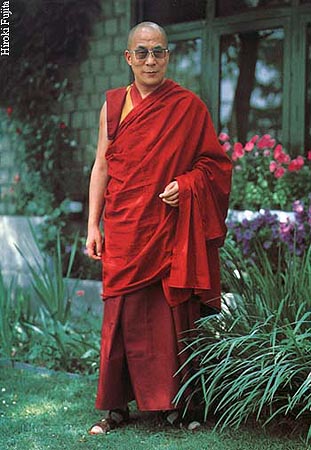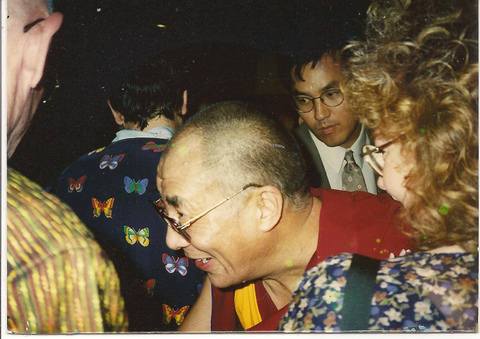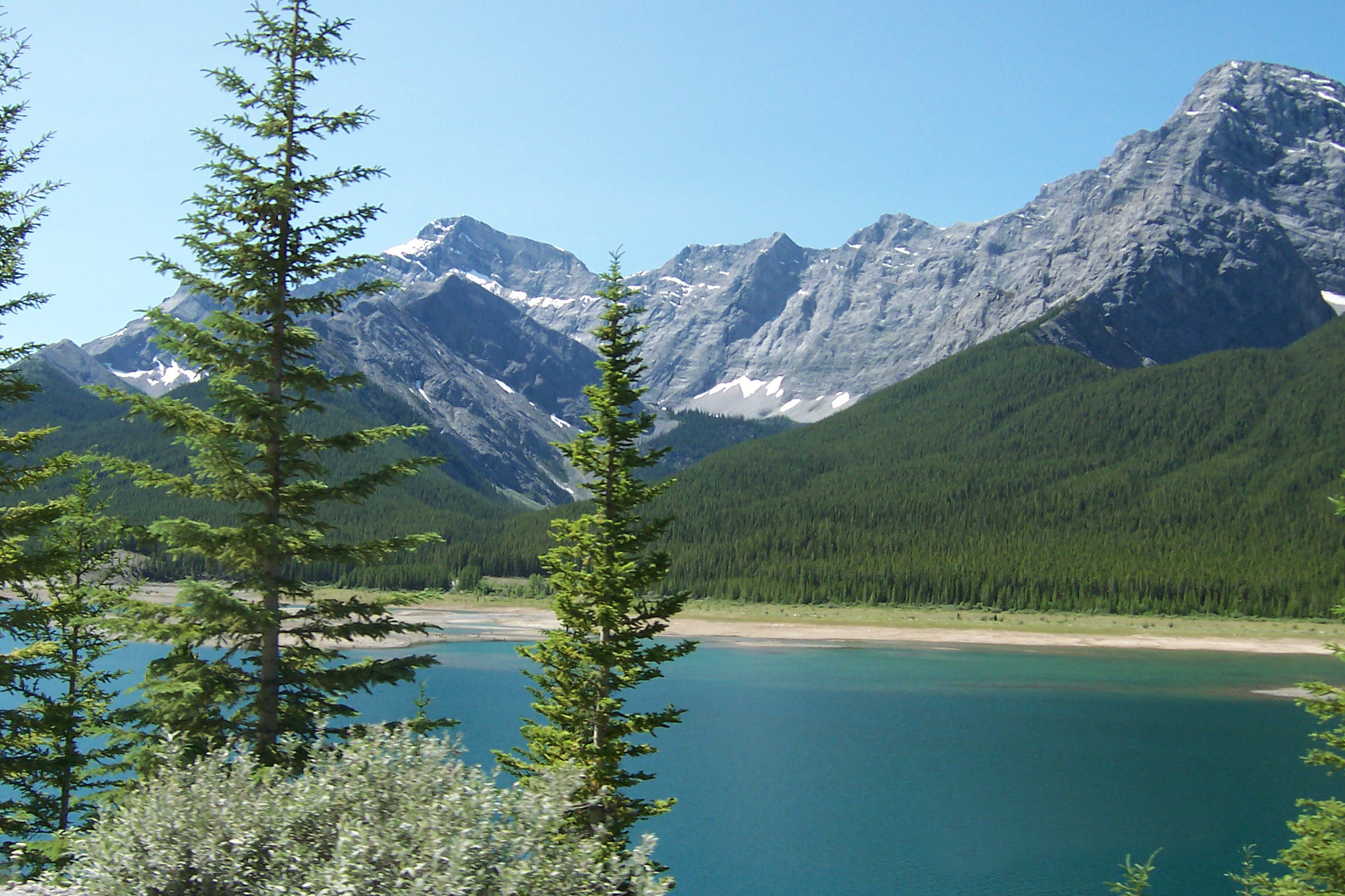
“Those my friends who really seriously thinking about my birthday and at the same time wishing and also prayer for my long life so I mentioned the best gift for me on birthday: Please keep your own mind, your own heart – more compassionate, more spirit of seriously or genuinely sense of concern of others wellbeing and with that motivation, if possible serve others, helping other people also other animals. If you don’t have opportunity to serve them, then at least restrain from harming them. So to all friends, actually brothers and sisters – please keep in your mind, for the rest of your life – More compassionate life. That is the best present for my birthday” – His Holiness the Dalai Lama
Foundation‘s photo.
On this July 6th, the 79th birthday of Tenzin Gyatso, His Holiness the Dalai Lama, may we share this prayer, English translation by Geshe Thupten Jinpa.
PRAYER FOR THE LONG LIFE OF HIS HOLINESS THE DALAI LAMA
Om Svasti!
To the assembly of most kind teachers, both present and past –
The miraculous dance of the body, speech and mind of innumerable Buddhas
Manifesting in accord with aspirants’ spiritual capacities,
The wish-granting jewel, the source of all virtue and goodness –
To you, we offer our prayers with fervent devotion:
That Tenzin Gyatso, protector of the Land of Snows live for a hundred aeons.
Shower on him your blessings so that his aspirations are fulfilled without hindrance.
To the assembly of all meditational deities
Manifesting as countless mandalas and divinities –
The magical clouds of immaculate, transcendent wisdom
Reaching to the farthest expanse of the space of ultimate reality –
To you we offer prayers with fervent devotion:
That Tenzin Gyatso, protector of the Land of Snows live for a hundred aeons.
Shower on him your blessings so that his aspirations are fulfilled without hindrance.
To all the victorious Buddhas of the three times
Endowed with ten powers and who are even masters of the gods,
And whose attributes of perfection are the source of all compassionate deeds
Benefiting the vast ocean-like realm of sentient beings,
To you we offer prayers with fervent devotion:
That Tenzin Gyatso, protector of the Land of Snows live for a hundred aeons.
Shower on him your blessings so that his aspirations are fulfilled without hindrance.
To the assembly of sacred doctrine embodied in the Three Vehicles,
Supremely serene, a jewel-treasure of enlightenment,
Stainless, unchanging, eternally good, and the glory of all virtues,
Which actually liberates beings from the sufferings of the three worlds,
To you we offer prayers with fervent devotion:
That Tenzin Gyatso, protector of the Land of Snows live for a hundred aeons.
Shower on him your blessings so that his aspirations are fulfilled without hindrance.
To all members of the enlightening, noble spiritual community,
Who never stray from the thoroughly liberating adamantine city,
Who possess the wisdom eye that directly sees the profound truth
And the highest valour to destroy all machinations of cyclic existence,
To you we offer prayers with fervent devotion:
That Tenzin Gyatso, protector of the Land of Snows live for a hundred aeons.
Shower on him your blessings so that his aspirations are fulfilled without hindrance.
To the assembly of heroes and dakinis, heavenly beings of the three worlds,
Who appear in the highest paradises, in the sacred places, and in the cremation grounds,
And who, through creative play in the hundred-fold experiences of bliss and emptiness,
Support practitioners in their meditation on the excellent path, To you we offer prayers with fervent devotion:
That Tenzin Gyatso, protector of the Land of Snows live for a hundred aeons.
Shower on him your blessings so that his aspirations are fulfilled without hindrance.
To the ocean of protectors endowed with eyes of transcendent wisdom –
The powerful guardians and upholders of the teaching
Who wear inseparably on their matted locks
The knot symbolising their pledge to the ‘Vajra Holder’ –
To you we offer prayers with fervent devotion:
That Tenzin Gyatso, protector of the Land of Snows live for a hundred aeons.
Shower on him your blessings so that his aspirations are fulfilled without hindrance.
Thus to this congregation of excellent, undeceiving refuge,
We pray that by the power of this prayer
Expressed from a heart filled with fervent devotion and humility,
May the body, speech and mind of the sole of the Land of Snows,
The supreme Ngawang Lobsang Tenzin Gyatso,
Be indestructible, unfluctuating and unceasing;
May he live for a hundred aeons,
Seated on a diamond throne, transcending decay and destruction.
You are the jewel-heart embodying all compassionate, beneficial deeds;
O most courageous one, you carry on your shoulders
The burden of all the Buddhas of the infinite realms.
May all your noble aspirations be fulfilled as intended.
By virtue of this may the heavenly doors of the fortunate era open
Eternally as a source of relief and respite for all beings;
And may the auspicious signs reach the apex of existence and release,
As the sacred teachings flourish through all times and in all realms.
May the nectar-stream of the blessings of the Lotus Holder
Always enter our hearts and nourish them with strength.
May we please you with offerings of dedicated practice,
And may we reach beyond the shores of perfect compassionate deeds.
Through the blessings of the wondrous Buddhas and Bodhisattvas,
By the infallible truth of the laws of dependent origination,
And by the purity of our fervent aspirations,
May the aims of my prayer be fulfilled without hindrance.
| © English translation. Geshe Thupten Jinpa, 2002. | ||
| Photo/Steve Granitz |


